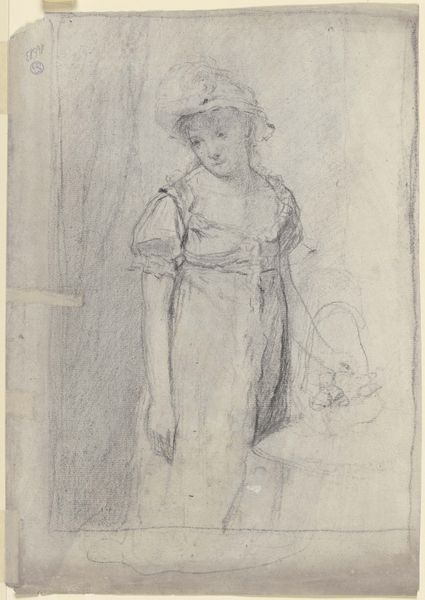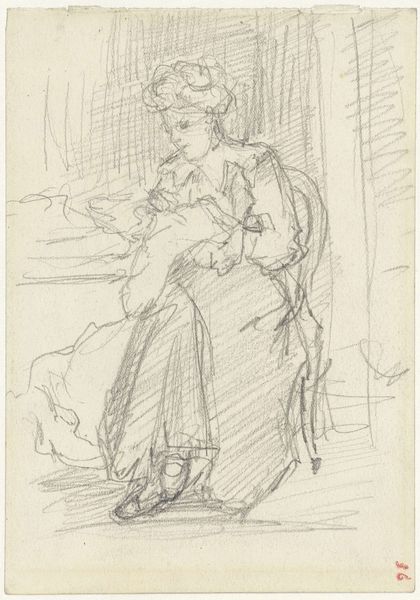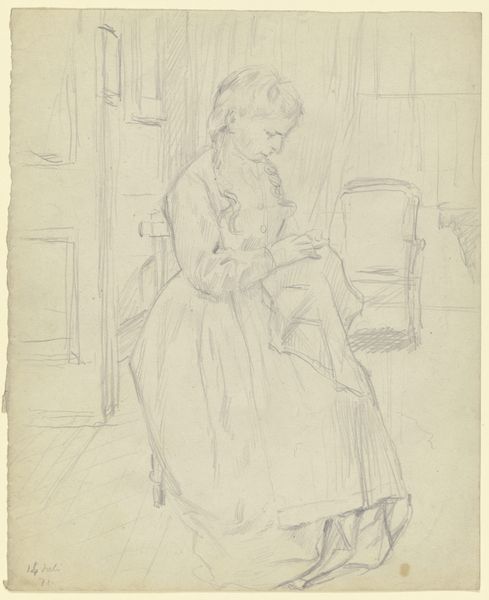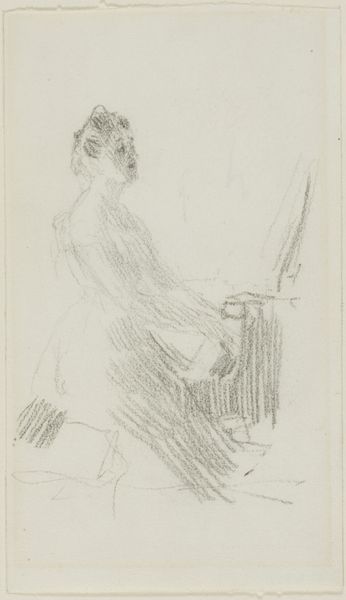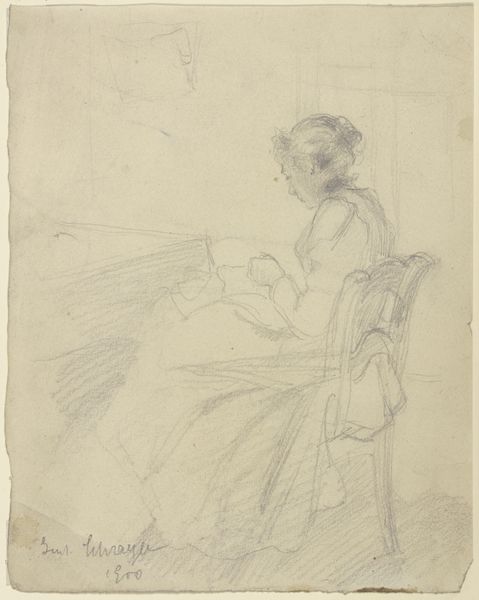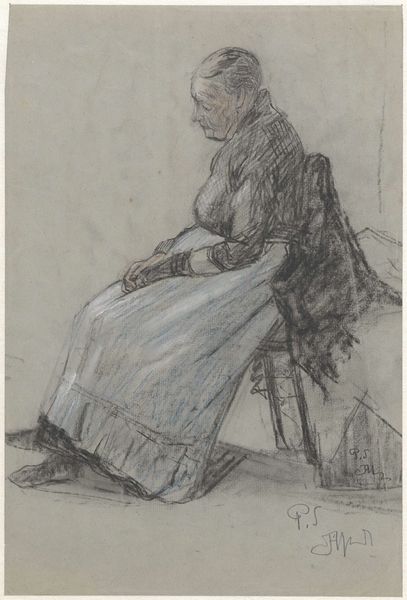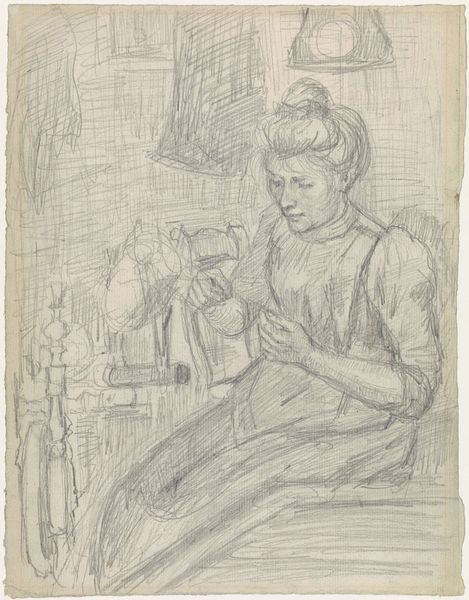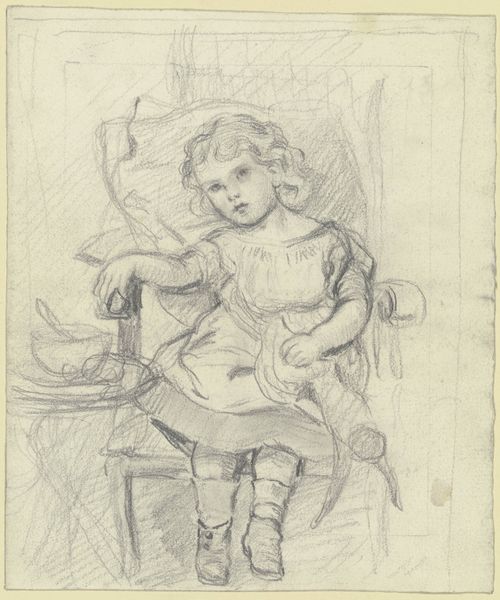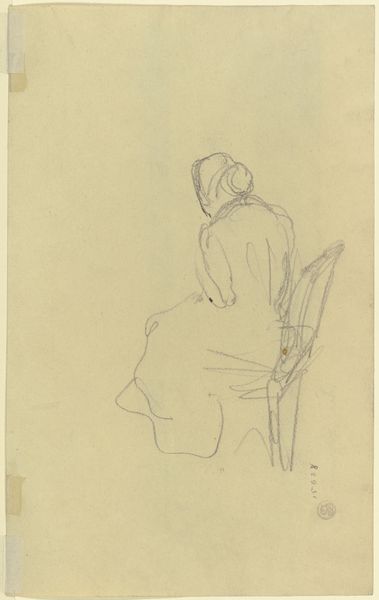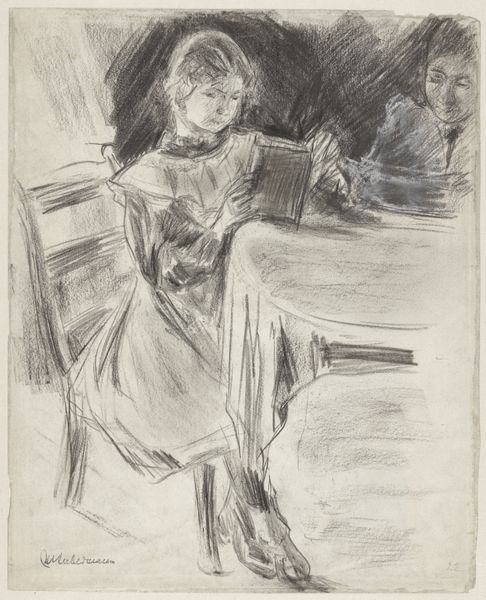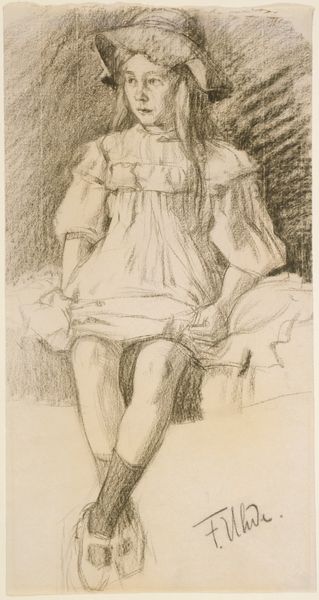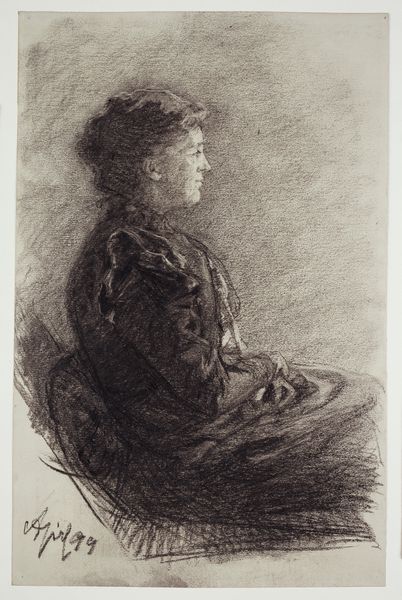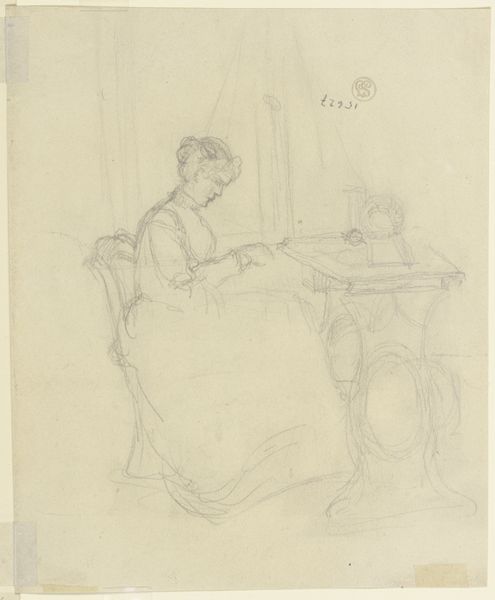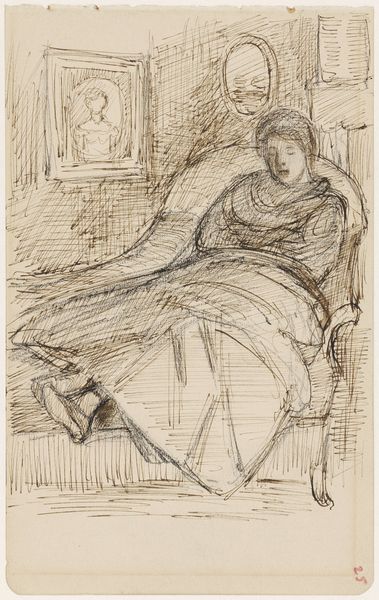
drawing, gouache, paper, pencil, chalk
#
portrait
#
drawing
#
pen sketch
#
gouache
#
pencil sketch
#
figuration
#
paper
#
pencil
#
chalk
Copyright: Public Domain
Curator: Let's turn our attention to "Luise Scholderer in Travel Costume, Sitting at a Table" by Otto Scholderer, currently held here at the Städel Museum. Editor: The rapid, almost frenetic sketchiness gives it such an intimate, immediate feel, doesn't it? It looks like a snapshot, yet the layering of chalk and pencil gives a real depth of tone and texture. Curator: Absolutely. Scholderer created this portrait using pencil, chalk and gouache on paper. It’s compelling because it captures his sister, Luise, not posed formally, but in what feels like a fleeting moment of repose, perhaps during their travels. Editor: I am curious about the hat she wears; a symbol of upper-class propriety and a means of social identity that can often go unnoticed when deconstructing artworks through gender studies. Do you see this piece speaking more on social expectations than candid simplicity? Curator: That is very insightful, considering Luise’s role in social circles. Beyond personal portrayal, this work shows us the performative aspect of leisure during the late 19th century. Notice the 'travel costume', as it's described—even travel involved a certain amount of theatricality. The costume signals not just practicality but status and a curated identity. Editor: The quick strokes might also suggest something about the economics of art production at that time, reflecting speed as an element driven by demands of the art market or even a personal urgency from the artist due to his position and obligations in his own milieu. Was this a common process or experimentation by Otto in creating studies to possibly propose them as commissions? Curator: It raises interesting points. While seemingly casual, the level of detail in her face and dress hints at a deeper connection. It’s a reminder that seemingly effortless sketches often result from intense observation and understanding of material. And let’s remember the role of exhibitions in circulating images. It could also be a study for a larger composition. Editor: Indeed. Considering both the artistry and the subject's status in the setting it makes you wonder what the conditions were that birthed the moment he captured here so effortlessly and so directly; both telling to what remains unsaid through the nature of its design and use of media! Curator: Thank you. This has certainly deepened my own appreciation. The interplay between social signaling and raw material—a testament to his and Luise’s narrative that engages on several sociohistorical levels.
Comments
No comments
Be the first to comment and join the conversation on the ultimate creative platform.
